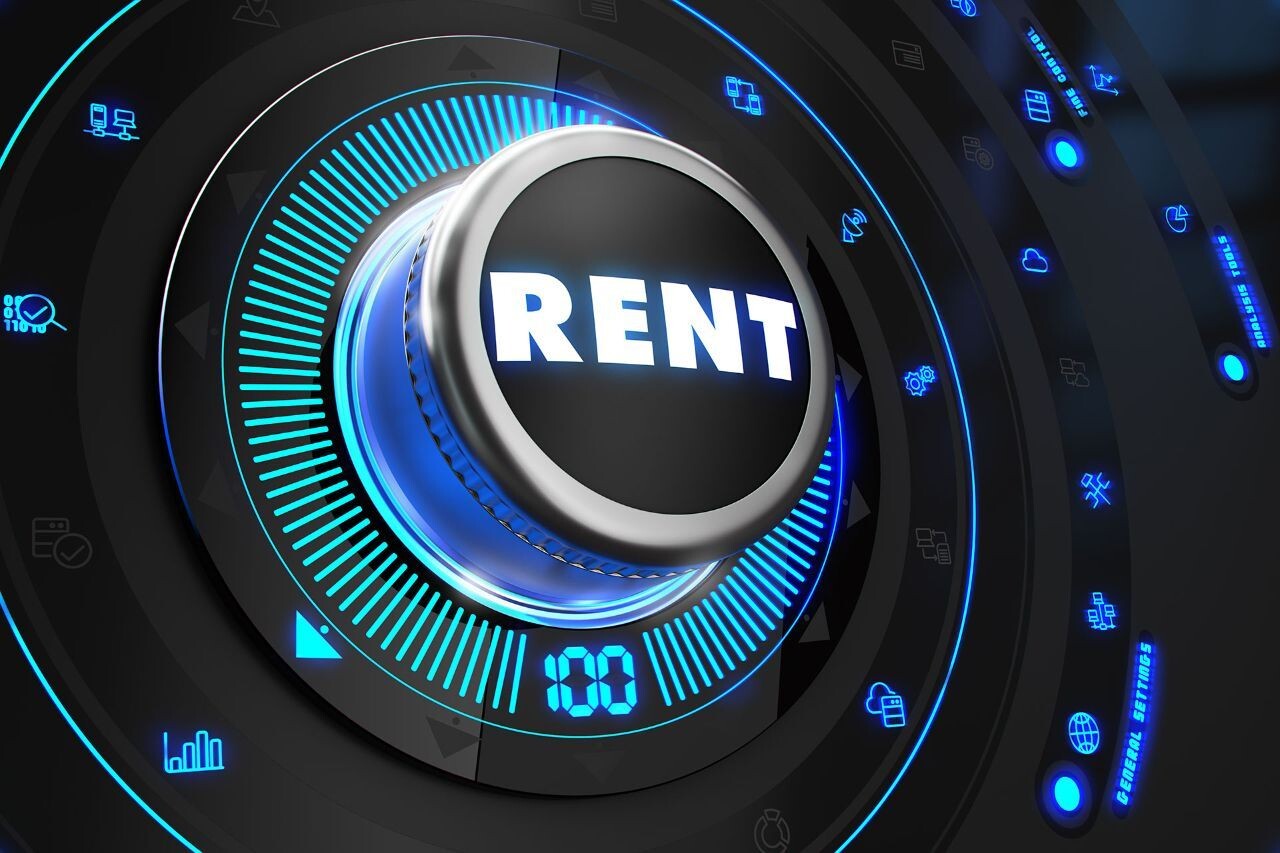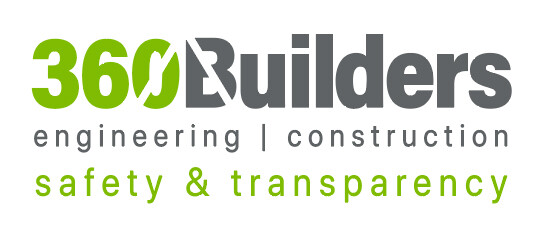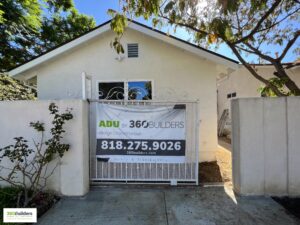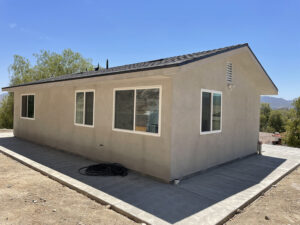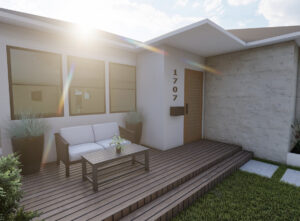Thanks to a recent change in Los Angeles law, the city now allows you to build what are called Accessory Dwelling Units (ADU) and live in them, too. You can have an ADU if it’s on land that already has one single-family detached home on it. You’ll probably be living at least partly in the ADU, but you can use it for commercial purposes too. Some people call that a granny flat, backyard cottage, in-law unit or detached accessory dwelling unit.
Aside from the rules for building an ADU, you must follow many of the same laws that apply to renting in Los Angeles – such as the rent control rules. Whether your new rental property is covered by rent control depends on whether the house you live in is covered by rent control and how your new ADU will be used. You must know all these rules before you build an ADU – or before a prospective tenant moves in.
When you hear about rent control, it might conjure up images of the 1970s when landlords were notorious for price gouging on apartments. Maybe you’re wondering if that will happen to your new ADU. Remember – rent control is a local law enacted in Los Angeles many years ago by the electorate. This means that there are some strict rules for how the law is applied. In this article, we’ll to give you an overview of what rent control means for your ADU and how it might affect you in practice.
When should I pay attention to rent control?
If you’re building a backyard cottage or granny flat that will be sold to a tenant, it’s important that you know whether your new rental unit will be covered by rent control.
If you’re renting out a cottage that you live in too, it’s still important to know about rent control – but there are special rules called an “Affordable Rental Unit” (“ARU”) that allow you to charge more rent than a tenant is used to paying.
This article will teach you about those rules, but we’ll start with the basics.
We’ve already made it clear that rent control is a local law enacted by the electorate in Los Angeles many years ago. The official name of this law is the “Rent Stabilization Ordinance” (“RSO”). We’ll call it “rent control” for short.
Rent control applies only to rental units, not owner-occupied dwellings. If you’re renting out a condo or house that you live in too, it’s not covered rent control – unless you divide the unit into separate apartments and charge separately for each of them. In other words, a single-family home with one lock box and one gas bill is not subject to rent control.
If you live in a unit that’s covered by rent control, you can’t remove your name from the gas or electric service so that tenants pay for those utilities. You also can’t pass on utility costs directly to renters if they’re included in your rents. If you ask the utility company to separate out the service on your place, they must do so – and then pass that cost along to you.
When rent control applies to my rental property depends on how I use it.
There are two categories of residential units: “Primary Residence” and “Secondary Residence.”
A rental unit is Primary Residence if it’s the primary place where you live.
A rental unit is a Secondary Residence if it’s not the primary place where you live and it has its own kitchen, separate from the kitchen in your home.
If you move out of your home for whatever reason – whether you’re going to college or getting married or moving in with a partner or parent – then your place will be Secondary Residence after the move date.
If you live with roommates and share a kitchen, your rental unit is still Primary Residence if you use more than half of it for sleeping purposes. All other things being equal, a laundry room counts as part of the house unless there’s a separate lock on the door. A kitchen nook, a vaulted area without a ceiling, or an attached garage doesn’t count as a separate kitchen unless there is also a separate entrance to it and the unit has its own bathroom.
Rent control does not cover owner-occupied condos with common areas such as gyms, pools, and laundry rooms.
If you live in a unit as your primary residence and rent it out when you move out, rent control doesn’t apply to the rental unit until after the move date. In other words, rent control doesn’t apply while the tenant is waiting for you to vacate.
The situation is more complicated where:
You’re selling your unit to the tenant, you live in a unit that you’re renting out as secondary residence, or You have built an accessory dwelling unit but haven’t yet rented it out.
The answer hinges on whether rent control applies at all to the rental property. If rent control would apply even if you didn’t move out of the main house and live in the rental unit, then the tenant becomes a “protected” tenant on your move-out date.
If rent control would apply even if you didn’t move out of the main house and live in the rental unit, then it must continue to apply when you move back into the main house after renting out the rental property. You can’t charge a higher rent to the tenant.
However, if your rental property would not be covered by rent control even if you moved in as a tenant, then you can set rents on day one at whatever level the market will bear.
Accessory dwelling units (“ADUs”) are subject to more rules than other types of rentals unless they qualify for an exemption.
If you live in a single-family house and create an ADU, rent control doesn’t apply to it. You can charge whatever rents market will bear for the new unit. However, if your property is covered by rent control now, or would be after you move out and create the ADU, then rent control does apply to the ADU unless you take it off the market as soon as possible. If rent control applies to the ADU, then you can’t charge more than one-half (1/2) of the legal regulated rent for your house.
If you live in a multifamily building and create an ADU, there is also some tricky timing involved that can’t be covered in this post.
If you have a commercial rental property, the rules are different than for residential properties because rent control doesn’t apply to commercial properties at all. If you live in a place that’s both or either and you’re not sure whether rent control applies, talk with an attorney who specializes in landlord-tenant issues.
Even if you’re not covered by rent control, a tenant can still sue you in court for things like unsafe housing or failure to provide promised services. The tenant has six months from the date of move-in to do this. (8)
For example, if a landlord breaks into the unit and steals some valuable possessions, then moves out without telling anyone, the tenant has six months from date of move-out to sue for damages done by the landlord.
If the tenant would be a “protected” tenant moving in during your absence, then you need to serve them with Notice to Tenants at Lease and/or Sufferance Termination Within 120 days of your projected move-out date. The notice must:
Specify the exact move-in date, explain how rent is calculated and due, specify any “bona fide” increases (like annual inflation factor), Specify how tenants can pay rent or correct other misstatements in the lease, and State that rent control applies to ADUs if applicable.
It’s a good idea to also send these notices to any other tenants in your building for your own records.
If rent control applies, the tenant can still take advantage of it even if you don’t serve advance notice on them. However, they may not file suit against you for overcharging until after they pay the higher rent for three months.
The biggest mistake landlords make is to forget to inform tenants about rent control. Always send advance notice if your rental property would be covered by rent control on the projected move-out date. If you’re a landlord, don’t rely on this article as legal advice. Contact an attorney who specializes in landlord-tenant law for specific information about your property.
